Healthy Nigerian Eating
Diet is all the rave this year and since we published this post on weight loss, there have been several questions on Healthy Eating in Nigeria and ways to make Nigerian Recipes healthier. If we follow the general rule of thumb for a well rounded healthy diet, most recipes can be modified to become “Healthier”. Here are some useful tips
1. Stews
The way stew is prepared can easily make it one of the worst offenders; the presence of oil and fried meat in most stews is enough to drive calories and fat content overboard. Simple modification on stews will be:
- Eliminate the use of additional oil, meat has lots of naturally occurring oil
- Replace fried meat with roasted meat
- Make use of fresh fish, goat and chicken. These are leaner protein sources
- Add some ponmon to enhance the “meatyness” at lower calories
2. Rice
Rice being a grain is fundamentally healthy, where rice offends on the diet scale is in the use of “white Rice”. White rice can simply be described as “Empty food” as it is nutritionally void, low in fiber and other essential vitamins.
The simplest modification on rice would be:
- Replace white rice with Brown rice. Brown rice has 2x the manganese and Phosphorus, 2 -1/2X the iron, 3x the vitamin B3, 4x the vitamin B1, 10x the vitamin B6 and 4X the Fiber (which is essential for keeping you fuller longer)
3. Soups & Sauces
The basic composition of most soups are similar (earthy broth with meat and fish plus vegetable), again this should be fundamentally healthy but two main factors affect the health composition of most stews and sauces;
- the use of excessive Oil
- the presence of excessive high fat proteins
Although most of the calories from protein are healthy; excessive consumption can lead to weight gain and other health risks.
Some modifications for soups will include:
- Reduce the amount of oil used (a good trick is to add oil after cooking not prior)
- Be mindful of the amount of fatty proteins added (cow meat is a huge culprit)
- Use more goat meat and chicken
- Use a variety of vegetables for greater health benefits
- Replace frozen/ dried vegetables with fresh ones that are in season
4. Solids
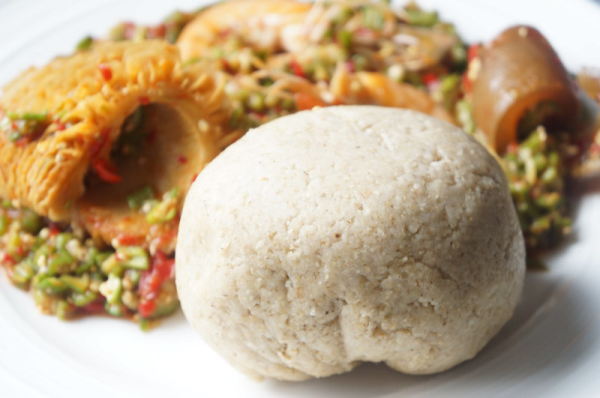
Wheat Fufu
Solids are a great source of carbohydrate , the problem with solid consumption comes in the type/amount consumed. Excessive carbohydrate intake eventually leads to weight gain and other ailments. It is important to note that Carbohydrate is essential; the problem isn’t with carbohydrate itself but the types of carbohydrate. Highly processed sources like white grains are vitamin deficient and encourage excessive eating.
Instead of the popular three solid sources (Garri, pounded yam and corn fufu) , here are excellent alternatives that you can make in your own home with better nutrition:
- Millet: Millet is high in protein—1/2 cup of cooked millet provides 4.2 grams. It is also rich in niacin, B6, calcium, iron, potassium, magnesium, and zinc.
-Millet is sold on the market in whole form. Simply mill the grains in a dry mill or blender and prepare it in the same way as semolina
- Sorghum (Guinea corn): although high in calories, there are good reasons. One cup of sorghum contains 12.1 g of dietary fiber, 21.7 g of protein, 551 mg of phosphorus, 672 mg of potassium, 53.8 mg of calcium and 8.4 mg of iron.
– sorghum grains is widely sold on the market as guinea corn; simply mill the grains in a dry mill and prepare it in the same way you will prepare semolina . Go for the darker variety (black or red) for better health benefits
- Oat Fufu: Oat is high in fiber and has the magical power to remove bad cholesterol from the body. Oat is also a good source of manganese, selenium, phosphorus, fiber, magnesium and zinc
– Buy unflavored whole oat, turn it into powder form with a blender and Prepare it the same way as semolina
- Plantain Fufu : Plantains are a good source of dietary fiber, vitamin C, vitamin A, b-complex vitamins (particularly – B6) and other minerals including potassium, magnesium, phosphorous and iron.
- Milled brown rice: This is another great solid alternative that you can make in your own home; make use of local unpolished ofada rice or imported brown rice. Brown rice is simply unrefined rice; it is rich in Selenium, Manganese, fiber and other vitamins and minerals.
– Simply mill the rice grains and prepare it in the same way you will prepare semolina or tuo
- Sweet potato flour: Sweet potatoes are low in Sodium, and very low in Saturated Fat and Cholesterol. They are also a good source of Dietary Fiber, Vitamin B6, Potassium, Vitamin A, Vitamin C and Manganese.
– To make sweet potato flour, Simply dehydrate (or sun dry) raw unpeeled sweet potatoes, mill and sieve into a powder. Prepare the same way as semolina or amala
5. Protein- Meat & Alternatives:
Culturally when we think of protein, we think of meat and fish; we tend to ignore other sources of proteins like soy, nuts, beans and other legumes. The problem with animal based protein sources is the high fat/cholesterol content which can lead to disease when consumed in large amount. On the other hand, plant based protein sources are deficient in one or more essential amino acid. The best option is to combine a variety of plant and animal based protein.
Sample modifications:
- Include plant based proteins like soy beans (Tofu (Wara-Soya) especially) and legumes in your diet
- Always choose lean cuts of meat and poultry
Other tips
- Use oil sparingly; the fact that you are using healthy oil doesn’t give you free reign
- Cook with less salt, the average adult is supposed to consume only half a teaspoon of salt per day
- Incorporate side dishes like salads into your diet
- Have snack time between meals (Eat a variety of nuts )
- Always choose less processed foods
The Nigerian Food guide (Adult 19+)*
Here is a helpful breakdown of how much food to eat in each category per day:
Carbohydrate (6-11 servings) = 40%
Sample serving size: 1 slice of bread, ½ cup cooked rice, ¾ cup of cereal, ½ cup pasta, ½ cup pounded yam
Vegetables and fruits (8-10 servings) = 32%
Sample serving size: ½ cup of peas, ½ cup cooked spinach (efo) or 1 cup raw, 1 medium banana, ½ cup fruit juice, 1 medium mango, 1 large size Guava
Milk and Alternatives (2-3 servings) = 14%
Sample serving size: 1 cup reconstituted powdered milk (reconstituted according to package instruction), ½ cup evaporated milk, 1 cup soy milk, ¾ cups yogurt, 50g wara (Tofu)
Protein (2-3 servings) = 14%
Sample serving size: 75g meat or fish, ¾ cup of beans, 150g of wara (Fulani or soy version), 2 eggs, ¼ cup of nut
*men should strive for the higher points on the scale and women should strive for the lower points
* remember that all carbohydrates are not created equal neither are all proteins. Go for whole grains and Lean protein
CLICK HERE FOR A SAMPLE WEEKLY FOOD TABLE
Lose Weight on a Nigerian Diet with Lose It Nigerian (LIN)


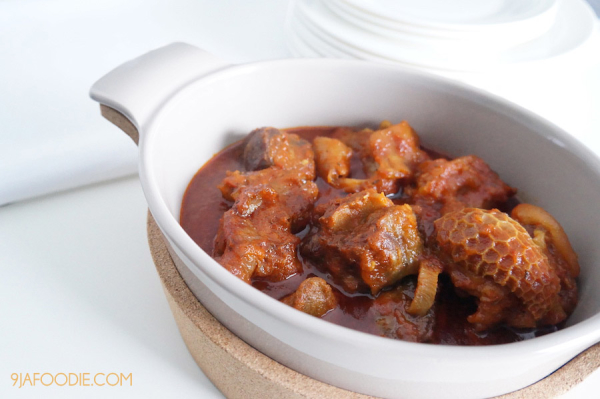
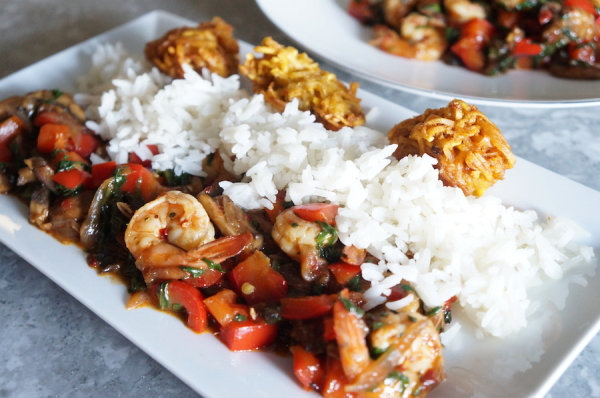
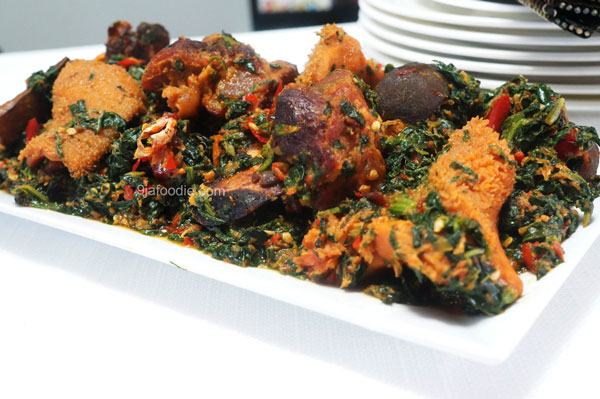
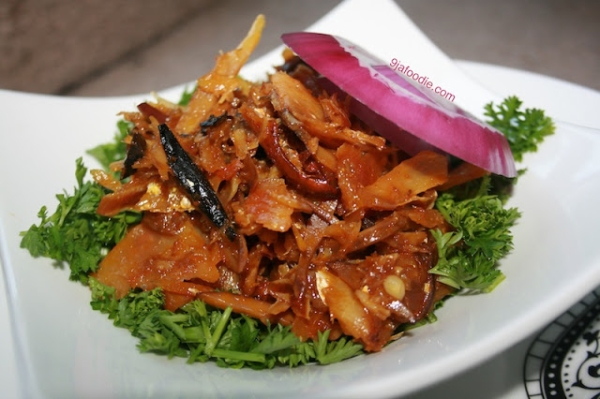
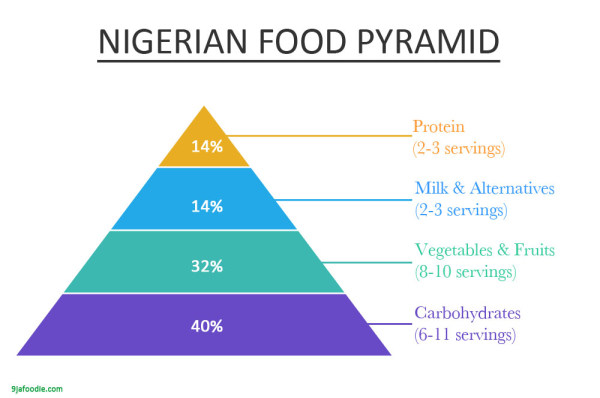
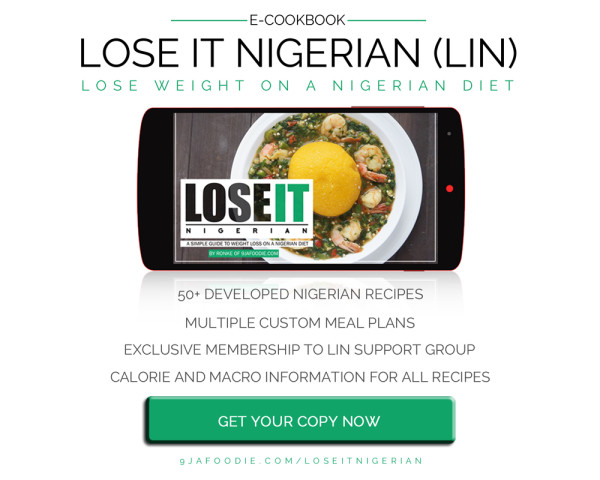

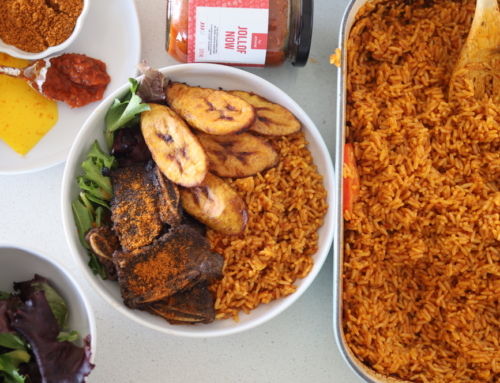
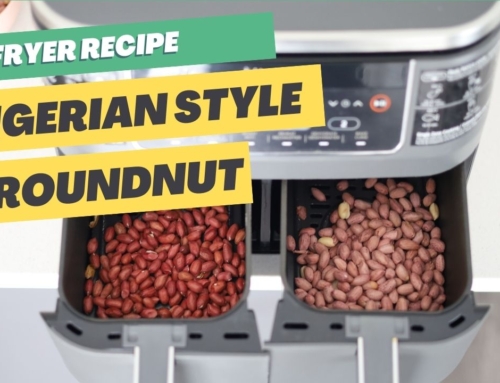

Hi….i would like to buy ur book but I’m Ghanaian and I wonder if I would be able to get the nigerian ingredients in ghana…..could u give me some nigerian foodstuff shop options in ghana if possible
We have a few Ghanaian on the plan actually. They said the ingredients are wildly available, just called something different in most case.
Please what can i use to measure? for example, 1 cup of rice. What readily available and accurate cup measurement can be used?
Your best bet is using measuring cup -> https://www.9jafoodie.com/measuring-utensils/
I’d like to correct a statement here, garri is not in fact healthy.
It’s what is known as empty carbs; high calorie content, little nutrients.
So it should be avoided or replaced where possible.
Sorry Lenny that’s an incorrect assertion. Garri might be carb heavy but carbohydrate is an essential macro nutrient which is critical for all bodily function.
You did good , dear. keep up the good work
I have an issue with light at Yaba, I am a student and buying fuel all the time is heartbreaking, to make food am always scared that there won’t be light because it would spoil. Can you mention a few more meal types I can make that can last without light.
Hello, ps how do I curb my appetite? And is wheat fufu really the best? Thank you
Hi. 9lafoodie I have two issues 1. Is there no other substitute for rice cuz the brown rice is expensive to buy buyt would still want to loose weight. 2. Can u also send a healthy nigerian food timetable for kids including affordable healthy lunch ideas too cause I. Wud also wnt child (2 yrs) to also eat healthy. And I have a problem knowing healthy things to buy when shopping in the market. Please help a desperate mother
You can substitute brown rice with Bulgur wheat, do check out our healthy Jollof bulgur recipe here . 2) I will come up with something.
9jafoodie, thank you very much for sharing how
to make plantain fufu. After I saw your post on how to blend it into paste , I have been enjoying my green plantain fufu.
Happy to help!! I am glad
Try uncle Bens brown rice, You will not go back to white plus it cooks quicker too but more expensive.
Great tip. thanks!
This is a job well done! Have read several comments and supporting the fact that palm oil is a great choice couple with coconut and Olive oil. If we don’t go beyond 5-10ml per cooking time for individaual,i think we would be good. We need healthy fat to burn bad fat.
Good and Healthy foods ideas you just gave to me. God bless you.
Great blog with lots of good information. Any ideas on low calorie Nigerian foods that keep you fuller for longer? Thanks and keep up the good work.
Thanks for this info. Great work. I agree on the comment that palm oil is okay, we should mind portions used and put close to the end of cooking. Your blog is indeed an inspiration. God bless you
How about white potatoes for solid….wats wrong with using that
Irish potatoes are not as healthy.
Thanks a million 9jafoodie, pls is whole wheat grains healthy for weight watchers. and pls how do i process potatoes powder and cocoyam powder, since they are good for weight watchers. God bless u guys.
pls u talked about oatmeal but u did not mention wheatmeal or are dey dsame, if no pls wia can i get d oatmeal
They are different. Oatmeal is the same as Quaker oat.
Where has this blog been all my life??? Thanks 9jafoodie. Please keep up the good work.
:)
Really luvly healthy diet tips, well done guys
Thank you
Pls is basmati rice also good
Basmati rice is still rice. go for brown basmati, it’s more nutritionally dense
Thank u. Very informative
Great . We need more of this type of information. Please keep it up. When you are well informed you will be better performed.
indeed
lm Tunde, a clinical biochemist… You miss out the role of exercise in the overall regulation of digestion, absorption and usage of food products in body process,,,, Is this within your jurisdction?
This post is about the effect of food on weight management .
What of wheat floor is it good
Wheat flour is higher in fiber – yes
Hi, nice diet i must say. I am a South African and struggling so much to loose weight, it has never been a problem for me before, but now ijoo! its so bad, but anyway thanks i am gonna try this weight loss recipes.
This is so so so nice!!.. no doubt you have saved a lot of people from poor eating habit as it is peculiar to nigerians. Am a dietitian,working with one of the very known teaching hospital in Nigeria…and I know what it means to give and convince people on a tailored individualized dietary plan,especially in diseased conditions. Wouldn’t mind joining the crew to eating right.
Dtn TM
Eat Right
Great!
Is cow leg good for weight loss?
Just stumbled over this and I am staring a diet tomorrow. Love this so much. Many thanks and hope we will get to do something bigger for the whole Africa.
How is efo spinach? Spinach is spinach and is found in Nigeria.
Living healthy is so important and I am excited about the degree of clarity available in your b log. It goes without saying that your interest is undivided and your passion undaunted. Kudos! Pls do mail me a copy of the healthy feeding timetable.
thanx so much, been looking for a site that talks about healthy eating in Lagos cos its so hard and restrictive. i started my workouts some weeks ago and i messed it up by eating beans five times a week. as its high in protein and fibre, its equally high in carbohydrate. :(…definitely going to try some of your recipes.
Good job. Thanks indeed. But how do I get brown rice? Its ofada rice that’s mostly in d market and the smell is terrifying :). Pls state where it can be bought. Also what’s d difference between Oat and Wheat. I know wheat in d market but is Oat in our common market too? Pls describe it or say another name with which its known. Thanks
Good job. I cnt zoom the diet table and will like to view it and make use of it to help me burn my excessive fats. Please send it to my email([email protected]). Thanks.
Pls whoever says groundnut oil is better than Palm oil is liar. They both have same content. If u want to use any, better use oliver oil. Meanwhile wheat is better than plantain flour cos plantian is carbohydrate and does not have enough fibre as wheat.
I tend to favour palm oil over ground-nut oil cos it’s less processed and generally healthier (some publications say it helps reduce cholesterol risk actually – unlike earlier claims that it causes high cholesterol). As for wheat being healthier than plantain, I disagree. Plantain contains potassium, has fewer calories than wheat, does have a good amount of fibre, is cheaper, is tastier, cooking is much easier, I don’t know anyone allergic to plantain but there are many people with wheat intolerance.
This is going to be a long one – :) Healthy eating is oh so important. Access to correct and non-misleading information is very important to healthy eating. I love this blog for its constant effort to inform us. I particularly love the post you had about the different kinds of meat we eat – you definitely validated my preference for goat meat. I’d like to point out that some of the food choices we make are fueled by age-old information that some of our parents read or were taught. My mom still has her reservations about palm oil and that conversation will never end in our house. Olive oil is not native to our region, so our great grandparents of course never had meals with olive oil. I actually read an article today saying that palm and coconut oil were competing for the top position among the healthiest of oils, followed by olive oil in 3rd position. Why has olive oil been touted so much? Of course the exultation of the Mediterranean diet as a healthy one (which of course it is) has played a huge role in olive oil’s popularity. But, palm oil is used in many commercial products both for skin, hair, and food processing; and I’m not talking about natural hair products or organic food. Palm oil is a detoxifier. It is also a tasty accompaniment to food. Contains a lot of phytochemicals as well as beta carotene. I could go on and on about food misconceptions, but that would be too much cos you’ve said a lot about it already in several posts. The bottom line is – Nigerian food is healthy. Portion control is the key.
I know this post is old but pearl do you have to throw jinsults because you want to make a point? Smh
I love your site. thank yoy so much
Hi there, what a really interesting article. I was born and raised in the UK so although I eat Niger food I don’t eat it every day – probably 10 times in a month. I always try to make all the food I eat as healthy as possible as I’m on a special diet for health reasons and was interested n low carb alternatives to pounded yam, gari etc. I found your ideas of oat and brown rice helpful and wonder if you could do the same with quinoa. My hubby loves Naija food and half of the battle is that I’m trying to change my diet but he’s not so any tips you could give and have given are great.
Thanks ;)
Using coconut oil is very effective for ur waste line
what about wheat?
Healthy as well because of the fiber content
Seriously I luv dis post nd I must share it 2 save lives. Pls more of dis.
thanks
What type of cup is required for these measurements?
WOW, this is a great work you’ve done… Shedding light to the darkness of majority about diets including me and also answering questions… Kudos for that … Thank you very much
and does completely eliminating dinner hinder my weight loss by any means?
can pounded yam be replaced with anything?
Some say pounded plantain (plantain fufu) is a better alternative. Personally I haven’t tried it, so I’m not speaking from experience. It’s said to pack less starch than tubers.
What is Oat in Nigerian Language (Yoruba precisely)? Is brown rice the same as the unpeeled rice? I have not seen brown rice before. If you peel rice grains, the grains are white (abi?). Thank you a lot for this blog. I also have to thank you sincerely for having time to respond to comments and questions.
Hi Collins, brown rice isn’t unpeeled rice. Unpeeled rice as you already know has the husk or skin or whatever the correct name is, still on it. When peeled, rice is not pure white … here’s a wikipedia excerpt to help.
The seeds of the rice plant are first milled using a rice huller to remove the chaff (the outer husks of the grain). At this point in the process, the product is called brown rice. The milling may be continued, removing the bran, i.e., the rest of the husk and the germ, thereby creating white rice. White rice, which keeps longer, lacks some important nutrients; moreover, in a limited diet which does not supplement the rice, brown rice helps to prevent the disease beriberi.
Either by hand or in a rice polisher, white rice may be buffed with glucose or talc powder (often called polished rice, though this term may also refer to white rice in general), parboiled, or processed into flour. White rice may also be enriched by adding nutrients, especially those lost during the milling process. While the cheapest method of enriching involves adding a powdered blend of nutrients that will easily wash off (in the United States, rice which has been so treated requires a label warning against rinsing), more sophisticated methods apply nutrients directly to the grain, coating the grain with a water-insoluble substance which is resistant to washing.
In some countries, a popular form, parboiled rice, is subjected to a steaming or parboiling process while still a brown rice grain. This causes nutrients from the outer husk, especially thiamine, to move into the grain itself. The parboil process causes a gelatinisation of the starch in the grains. The grains become less brittle, and the color of the milled grain changes from white to yellow. The rice is then dried, and can then be milled as usual or used as brown rice. Milled parboiled rice is nutritionally superior to standard milled rice. Parboiled rice has an additional benefit in that it does not stick to the pan during cooking, as happens when cooking regular white rice. This type of rice is eaten in parts of India and countries of West Africa are also accustomed to consuming parboiled rice.
very well explained Obi. Thanks!
Thank you for this explanation. I hope to check with the rice millers here in Nigeria how they mill the rice and I shall get back to this blog to tell.
However, the other question was ignored. The question about Oat.
lol. Sorry man, I can’t help you with that one. I doubt that it is indigenous to Nigeria, so may not have a local name. But I stand to be corrected on this.
I am so happy and motivated by your post.I used to weigh 70kg but baby fat increased it to 117kg and it has been a pros fr me.I ve started diet and also attend. Zumba class hoping dat I will come bk to my former shape.I love food a lot but have tried in reducing d portion I eat.Thank you for your wonderful post cos ve learnt a lot and m going to implement dem.
What of Vegetable oil?, Cotton Seed oil?
healthy choices
So am tryin to loose my belly fat n am a student so its kinda hard plus ur timetable isn’t so clear on my fone. Could u mail it to me
Hi,are u saying groundnut oil is healthier than palmoil?
Yes it is… the fat content is comparable but groundnut oil is cholesterol free.
Hi there,
I agree with your recommendations here. Thank you for this write-up. I became a vegan recently and have been looking for ways to modify most of the Nigerian food favourites to suit my diet. It is actually surprisingly easy. I’ve never felt better, my skin is clearing up and I’ve managed to lose some extra pounds. Check out my new blog if you have the time: vegannigerian.blogspot.co.uk
Thank you 9jafoodie.
You are welcome
it is a good development in africa as a wholle so a big thank you gous to you 9ja as a familly
Thank you
9jafoodie! Thank you very much. This is very informative. I’ve been told that Basmati, jasmine and ofada rice are healthy alternatives to plain parboiled rice, is this true? Also does brown rice take forever to cook?
Once again thank you 9jafoodie
Brown rice takes a lot longer to cook for sure. For rice to be a better alternative, it has to be unpolished; health wise White Jasmine rice and white basmati are on the same scale as parboiled rice.
This write up is very informative but I’m sorry I disagree that basmati rice isn’t healthy
what’s your disagreement based on?
Nice work in progress. Keep it up!
Thanks
Thanks a lot, Naija foodie for life!
You are welcome anytime :)
Thanks for this write up! it is so detailed & informative.
God bless you.
Thank you!!
Good news for Nigeria & Africa. I welcome this awareness of healthy eating in Nigeria! As an expert in African Fitness & wellness, general fitness consultant. We have a lot of work to do in this area! Together we can fight this war on health. If you need my help , i will to do my best to keep Africa healthy. King Franky
Thanks!